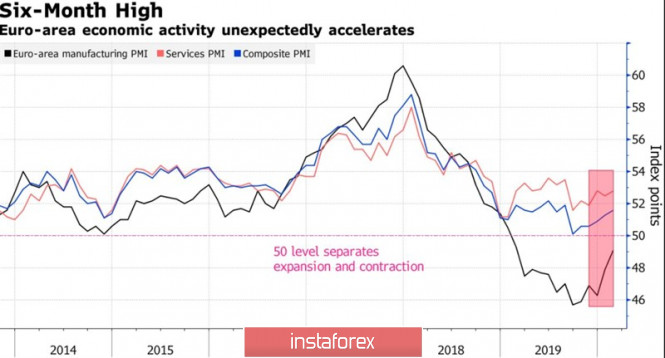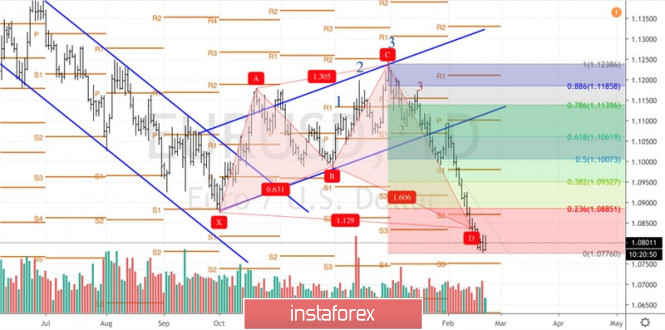
Optimistic statements by ECB Vice-President Luis de Guindos noted that a strong labor market and low interest rates can support economic growth in the eurozone. The acceleration of European business activity from 51.3 to 51.6 in February became a kind of ray of light in the dark realm for fans of the euro and allowed EUR/USD to the base of the 8th figure. However, there are few reasons for the development of a full-fledged correction for the single European currency.
The release of data on German and European PMI rightfully claimed to be the key event of the week. The minutes of the January meetings of the Fed and the ECB failed to shake the confidence of the "bears" in the main currency pair. The Fed exuded optimism about the bright future of the US economy. The European Central Bank expressed doubt that a cease-fire in the trade war between Washington and Beijing will be able to lift the eurozone economy from its knees. In the end, most tariffs remain in effect, which negatively affects both international trade and global GDP.
Data on the business activity should show how the eurozone economy has adapted to the pernicious influence of the coronavirus. And at first glance, the rise of the German purchasing managers' index in the manufacturing sector to an annual high indicates that not everything is as bad as it is commonly believed. Nevertheless, you need to understand that companies are trying to act ahead of the curve. They may well have increased new orders because of concerns about the epidemic. If so, the PMI may start to fall in March.
Dynamics of European business activity

The "bulls" on EUR/USD really want to hope that the European economic sentiment index and the German business climate index from IFO will be the key events of the week by February 28. Nevertheless, we must understand that the euro's weakness is structural. The export-oriented economy of the eurozone looks weak due to a decrease in external demand, the index of economic surprises is falling, and the euro is actively sold as a funding currency in the context of high global risk appetite. The latter is evidenced by historic highs in the US and European stock indices.
The collapse of EUR/USD was the result of dashed hopes for the pair's growth at the end of 2020. As a result, many banks and investment companies are forced to make quick adjustments to their "bullish" forecasts. Societe Generale expects to see the euro at best at $1.16 by December. ABN Amro, JPMorgan Chase, Standard Chartered and Wells Fargo are among the companies that admitted their mistakes.
Technically, if the "bulls" on EUR/USD manages to catch on to the important level of 1.08, where the target for 113% is located on the "shark" pattern, they will have the opportunity to develop a correction to 23.6%, 38.2% and 50% of the CD wave as part of the transformation of the "shark" into 5-0.
EUR/USD, the daily chart
